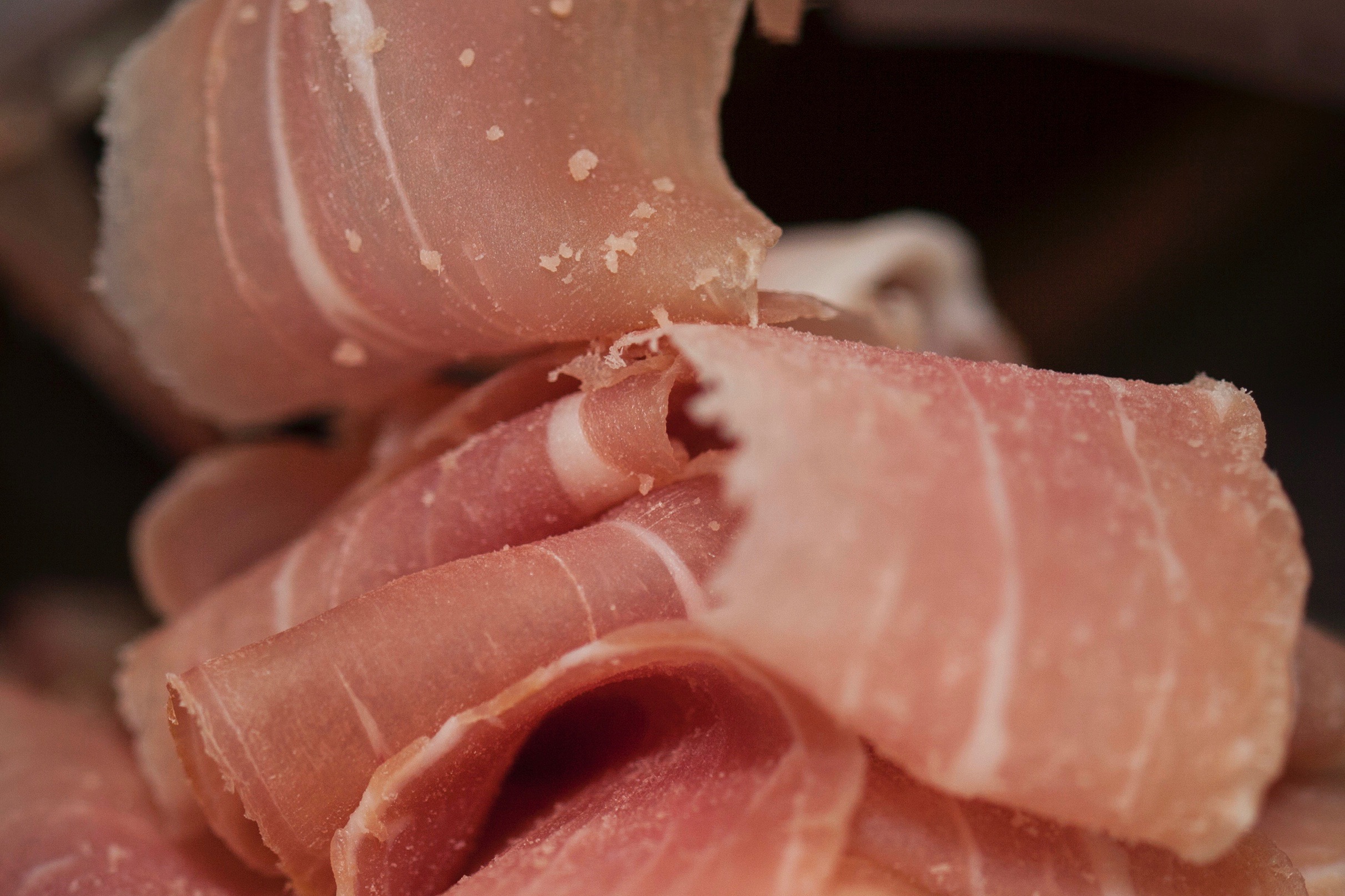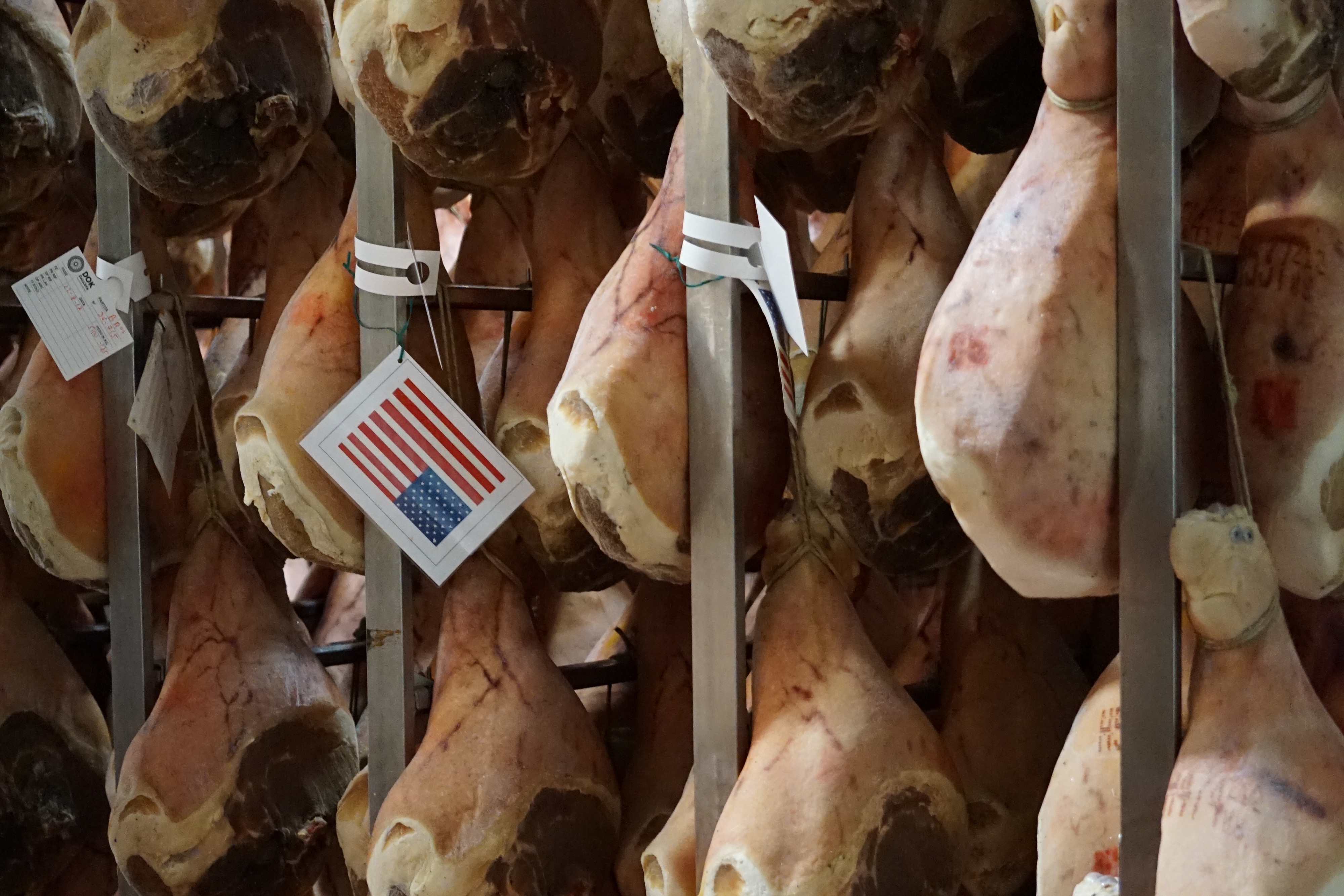Prosciutto crudo must be the greatest expression of pork meat curing. It dates back to Roman times and has never ceased to be one of the most loved and consumed products of Italy.
We are all familiar with it’s distinct flavor, but can all of us answer the question “how is prosciutto crudo actually made?” It’s no easy answer, many steps are involved and experienced knowledge is required.

Selection of the rear thigh of the pig comes first. Key factors are its provenance, weight and quality. It is then salted and left in refrigerated cells for a number of days. This first layer of salt is then wiped away and this step is repeated, and after about two weeks the second layer of salt is wiped away. Then the hams are left to rest for about 80 days in a more humid environment. Afterwards they are hung in dry cellars and left to age for several months (depending on the desired end result). So basically the steps are salting, fermenting and ageing.

Crudo means raw, and in fact no cooking is involved. A fresh piece of meat, when salted and aged for months, develops through time incredibly complex umami, savoury, sweet and bitter flavors that simply were not there before.
What happens exactly? Basically, if the already existing enzymes in the flesh are brought to the right conditions, they begin to break down the meat’s proteins, fats and glycogen. These are transformed into amino acids, fatty acids and sugars. These compounds host all the flavors we love and over time magic happens. There is no cooking technique that can give a piece of meat such depth in flavor.
There’s many different kinds of prosciutto all across Italy, depending on slight technique and recipe variations as well as ageing times. The most known are Prosciutto di Parma and Prosciutto di San Daniele, but wherever you are in Italy there will be a local variant waiting for you, and it will be delicious!

Ideas for pairings
The best way? Just savor it over a slice of fresh bread and be amazed. It also plays as a great ingredient when paired with the right foods. Here are some ideas:
Prosciutto e Melone: Makes for the perfect summer bite! Just cover slices of cantaloupe with a slice of prosciutto, it’s as simple as that. This is an Italian classic, but experimenting with other fruit can be fun. Peaches, for instance, work amazingly. The idea is that the sweetness of the fruit balances the saltiness of the meat. Yum!
Prosciutto, fichi, mascarpone e noci: cut ripe figs in half, stuff with half a teaspoon of mascarpone cheese, and half a roasted walnut. Wrap the whole fig with a thin slice of prosciutto crudo. Fantastic finger food appetizer.
Saltimbocca alla Romana: A classic Roman dish. Very thin veal steaks get covered with a slice of prosciutto and a leaf of sage. Cook in a pan with butter and white wine.
Pasta e prosciutto: Cut the prosciutto into thin strips, sauté in a pan and add pasta and parmigiano reggiano cheese. Simple and comforting.
Pizza: over a freshly baked pizza. Don’t bake it! Just add it before serving.
